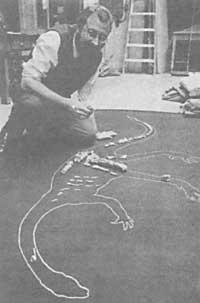Sedimentary soot layer
1986/04/01 Elhuyar Zientzia Iturria: Elhuyar aldizkaria
The layer of soot found in sediments 65 million years ago, according to some chemists at the University of Chicago, may be the result of a brutal global fire caused by the impact of a meteorite. These massive fires seemed to cause "nuclear winter" and could be responsible for the disaster of dinosaurs and many other living things.
The researchers, Wendy Wolbach, Roy Lewis and Edward Anders, have reached this conclusion by analyzing existing carbon deposits in Denmark, Spain and New Zealand.
In the words of scientists, "The enormous amounts of soot can have two forms of expression: Much of the terrestrial vegetation burned or burned many fossil fuels.
The first hypothesis would be correct for scientists. The meteorite, hitting the surface of the Earth, could become dust. Smoke from fires and broken meteorites could cover the Earth with a layer of dust. Sunlight would not reach Earth in its entirety and the plants lacked sufficient luminosity to initiate photosynthesis. Plants would die to a great extent; then animals that feed on them...

Gai honi buruzko eduki gehiago
Elhuyarrek garatutako teknologia




